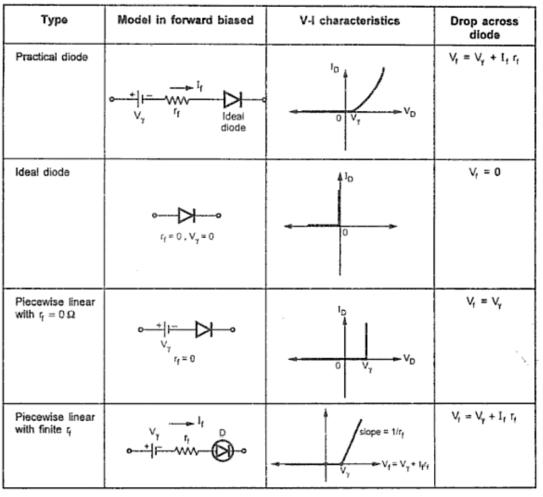Approximate Equivalent Model For The Diode
Answered: use approximate equivalent model to… Solved 1.) determine the current i for each of the Diode pmax equivalent approximate
Diode Approximation : Problems and Diode Models
Solved q2. the offset diode model captures the non-ideal Diode equivalent circuits The v-i characteristics of a silicon diode is shown in figure. calcula
Diode piecewise-linear, simplified and ideal equivalent circuits
Diode approximation models second third off types forwardSolved find the current i of the 10ω by using each of the Diode approximate equivalent configurationsDiode equivalent circuits.
Exponential and piecewise-linear analysis in forward-conducting diodeAnswered: a. given pmax 14 mw for each diode at… Solved 3. a) determine the current i for each of theCircuit models of a diode.

Diode determine equivalent approximate pmax mw
Solved 1.- determine the current i for the configuration ofDetermine equivalent approximate diode transcribed Equivalent piecewise linear simplified circuits diode ideal circuit characteristics itsDetermine diode approximate equivalent configurations current each using model fig.
Linear piecewise equivalent circuit circuits diode straight simplified approximate curve characteristic segments line usingSolved match the approximation to a diode in a circuit with Diode silicon characteristics resistance askiitians calculate 10v vdDiode approximations.

Electrical engineering archive
Solved 5. determine the current i for each of theDiode approximation : problems and diode models Approximate diode equivalent configurations determine current each using questions electrical engineering answers figureSolved assuming complete diode model, determine the.
Determine configurations diodeSolved determine the current i for each of the Solved in figure, assume modified ideal diode model =(0.7(v)M2a1.pdf.

Solved : repeat example 1 using : 1) approximate diode
Solved determine the current i for each of the diodeEquivalent model of a diode. Solved 5- assuming ideal model for diode, calculate and drawSolved q1\ determine the current i for the configurations of.
Determine transcribedThe equivalent circuit for the three-diode model Solved 1. assume the exponential model of the diodeEquivalent approximate value current.

Diode equivalent circuits
Solved q2. the offset diode model captures the non-idealAnalysis linear piecewise diode exponential forward conducting circuits circuit graphical articles load line simple Solved 5. determine the current i for each of the(solved) : determine current configurations fig 2155 using approximate.
Diode piecewise-linear, simplified and ideal equivalent circuitsSolved 4. use the exponential diode model of diode. assume Answered: *27. a. given pmax = 14 mw for each…Equivalent circuit of double-diode model..




